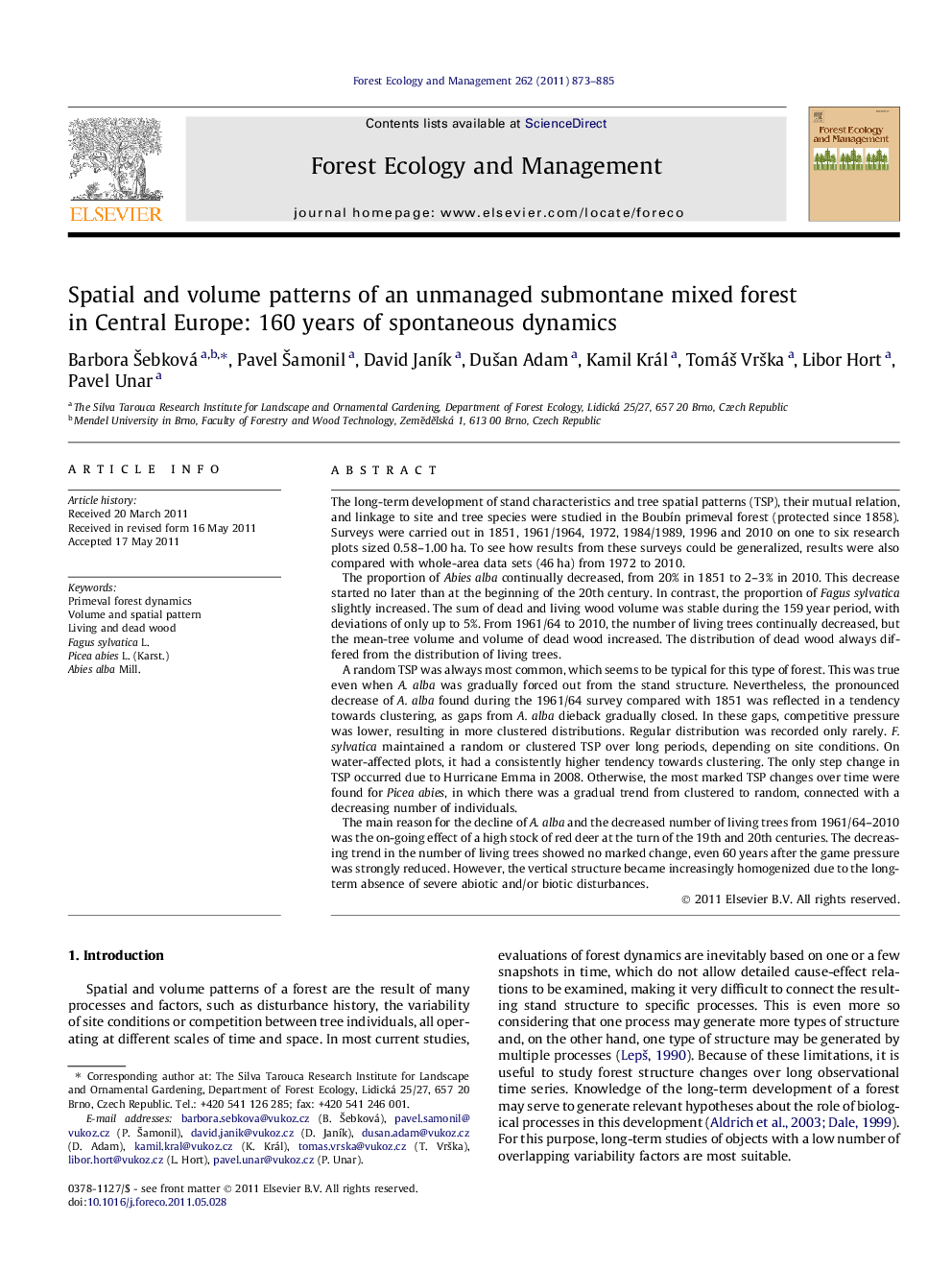| کد مقاله | کد نشریه | سال انتشار | مقاله انگلیسی | نسخه تمام متن |
|---|---|---|---|---|
| 88078 | 159281 | 2011 | 13 صفحه PDF | دانلود رایگان |

The long-term development of stand characteristics and tree spatial patterns (TSP), their mutual relation, and linkage to site and tree species were studied in the Boubín primeval forest (protected since 1858). Surveys were carried out in 1851, 1961/1964, 1972, 1984/1989, 1996 and 2010 on one to six research plots sized 0.58–1.00 ha. To see how results from these surveys could be generalized, results were also compared with whole-area data sets (46 ha) from 1972 to 2010.The proportion of Abies alba continually decreased, from 20% in 1851 to 2–3% in 2010. This decrease started no later than at the beginning of the 20th century. In contrast, the proportion of Fagus sylvatica slightly increased. The sum of dead and living wood volume was stable during the 159 year period, with deviations of only up to 5%. From 1961/64 to 2010, the number of living trees continually decreased, but the mean-tree volume and volume of dead wood increased. The distribution of dead wood always differed from the distribution of living trees.A random TSP was always most common, which seems to be typical for this type of forest. This was true even when A. alba was gradually forced out from the stand structure. Nevertheless, the pronounced decrease of A. alba found during the 1961/64 survey compared with 1851 was reflected in a tendency towards clustering, as gaps from A. alba dieback gradually closed. In these gaps, competitive pressure was lower, resulting in more clustered distributions. Regular distribution was recorded only rarely. F. sylvatica maintained a random or clustered TSP over long periods, depending on site conditions. On water-affected plots, it had a consistently higher tendency towards clustering. The only step change in TSP occurred due to Hurricane Emma in 2008. Otherwise, the most marked TSP changes over time were found for Picea abies, in which there was a gradual trend from clustered to random, connected with a decreasing number of individuals.The main reason for the decline of A. alba and the decreased number of living trees from 1961/64–2010 was the on-going effect of a high stock of red deer at the turn of the 19th and 20th centuries. The decreasing trend in the number of living trees showed no marked change, even 60 years after the game pressure was strongly reduced. However, the vertical structure became increasingly homogenized due to the long-term absence of severe abiotic and/or biotic disturbances.
► Abies alba decline started at the beginning of the 20th century at the latest.
► The sum of living and dead trees remained stable for almost 160 years.
► Tree spatial pattern (TSP) development differed for both tree species and sites.
► TSP was stable over 50 years, but not for the entire 160 year period studied.
► Game pressure in the past was the principal factor in forest development.
Journal: Forest Ecology and Management - Volume 262, Issue 5, 1 September 2011, Pages 873–885